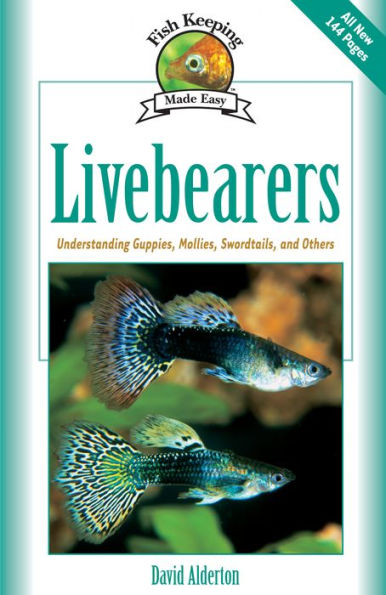Livebearers focuses on four families of fish which contain many of the most attractive and popular species in the tropical fish hobby today, including guppies, mollies, swordtails, and platies. The families include Goodeidae (Mexican livebearers), Anablepidae (four-eyes and others), Poeciliidae (guppies and others); and Hemirhamphidae (halfbeaks). Author David Alderton explains that hobbyists have applied the term livebearer to these four families for convenience even though there are fourteen families in the wild that reproduce by bearing live young. The chapter "Where in the World?" focuses on the natural history of these families, their distribution, and lifestyles. Hobbyists looking to begin an aquarium of livebearers or to expand their existing communities will find useful information in the chapter called "The Different Groups," in which Alderton discusses age considerations, health matters, and sex. The chapter also describes the four families and the most common genus/species of each. Included are sixteen representatives of the Family Goodeidae (e.g., Allodontichth, Characodon, and Skiffia), three genus of the Family Anablepidae (Anableps, Jenynsia, and Oxyzgonectes), twenty-six representatives of the Family Poeciliidae (e.g., Belonesox, Fiexipenis, and Limia); and three genus of the Family Hemirhamphidae (Dermogenys, Hemirhamphodon, and Namorhamphus).This colorful, user-friendly guide offers basic information on the anatomical characteristics, housing options, required aquarium equipment for livebearers as well as their feeding habits and food requirements (greenstuff, carotene-rich foods, live foods, meat, etc.). The breeding habits of livebearers have ensured their popularity with hobbyists, and the chapter on reproduction describes the various breeding habits of livebearers and outlines successful breeding strategies for interested hobbyists. In the chapter on health care, the author offers solid advice about caring for livebearers to maximize their lifespan in captivity, which is typically only a few years. He also gives information on signs of illness and some basic diseases that can be treated by the fish keeper.The final chapter offers photographs and distribution maps for sixteen popular livebearers of all four families, including information on size, physical description, natural habitat and behavior, and required aquarium conditions. The author's livebearer hit parade includes the butterfly goodeid, rainbow goodeid, black-finned goodea, four-eyed fish, guppy (millions fish), black molly, sailfin molly, swordtail, platy (moonfish), mosquito fish (dwarf and large), humpbacked (black-barred) limia, black-bellied limia, pike livebearer (piketop minnow), knife (Alfaro's) livebearer, and wrestling halfbeak. Resources, glossary, and index included.



